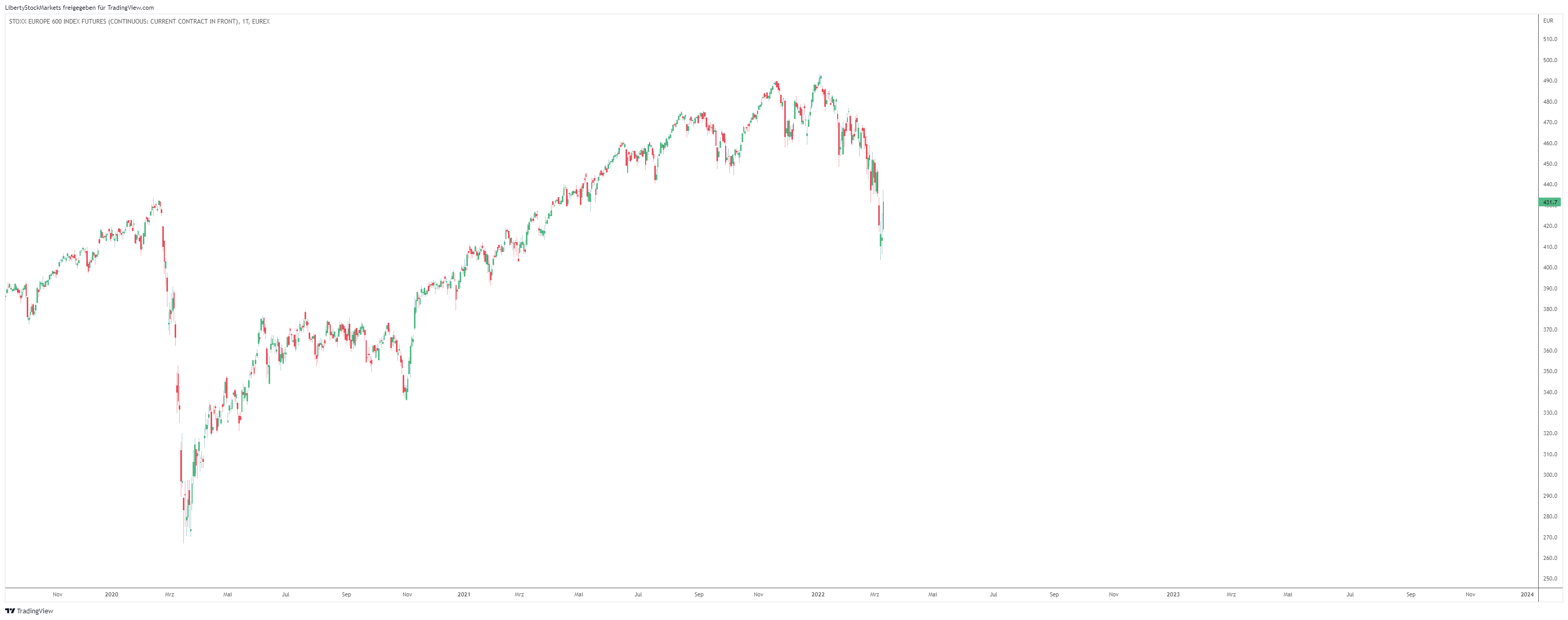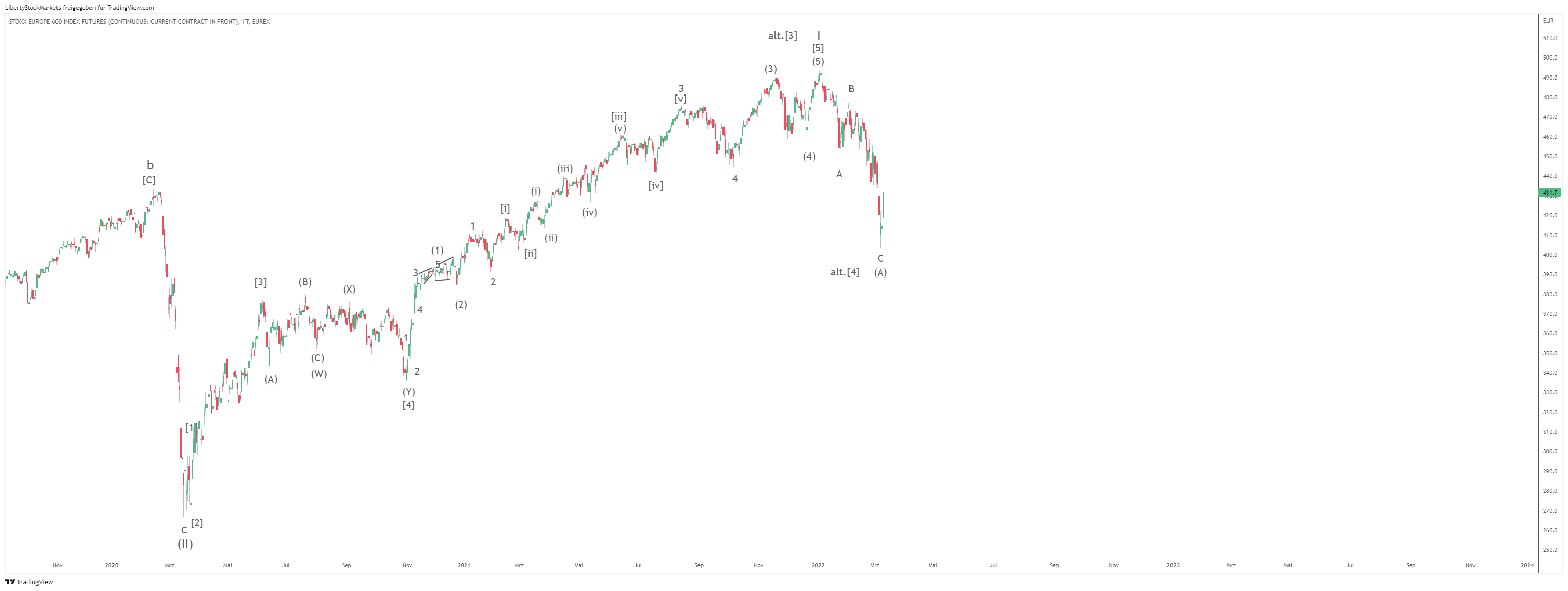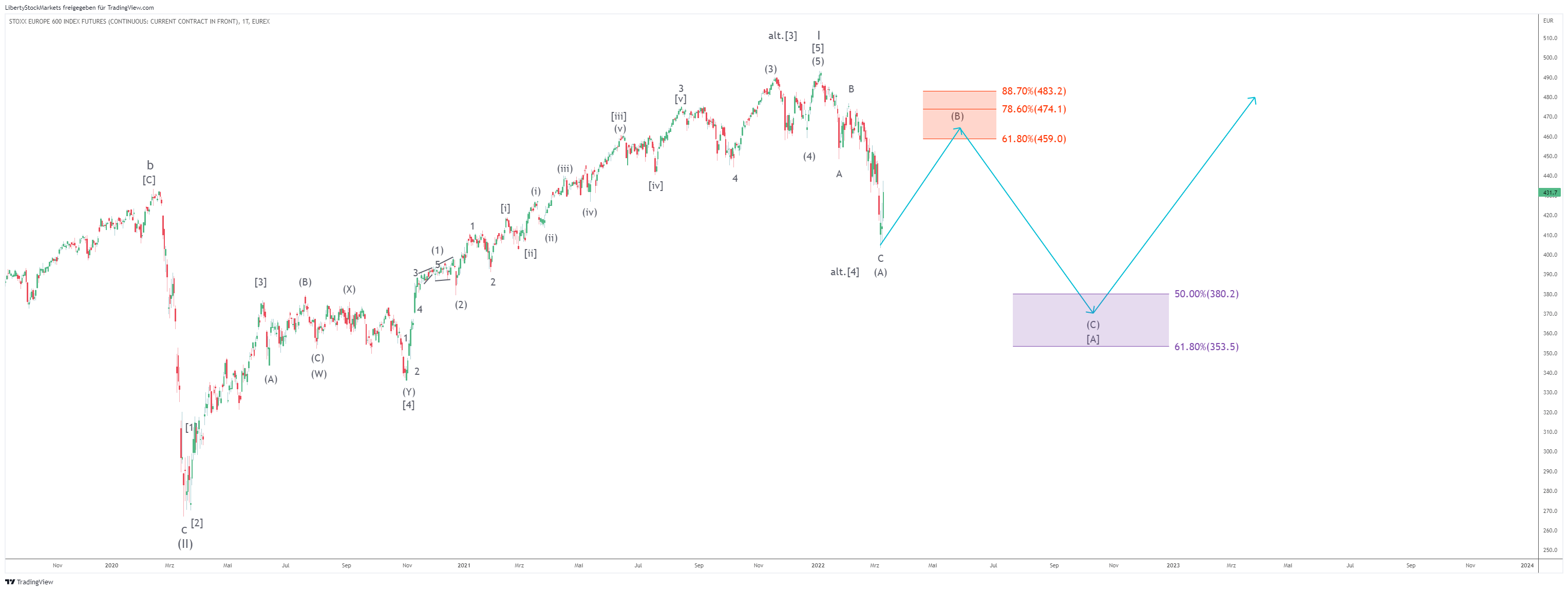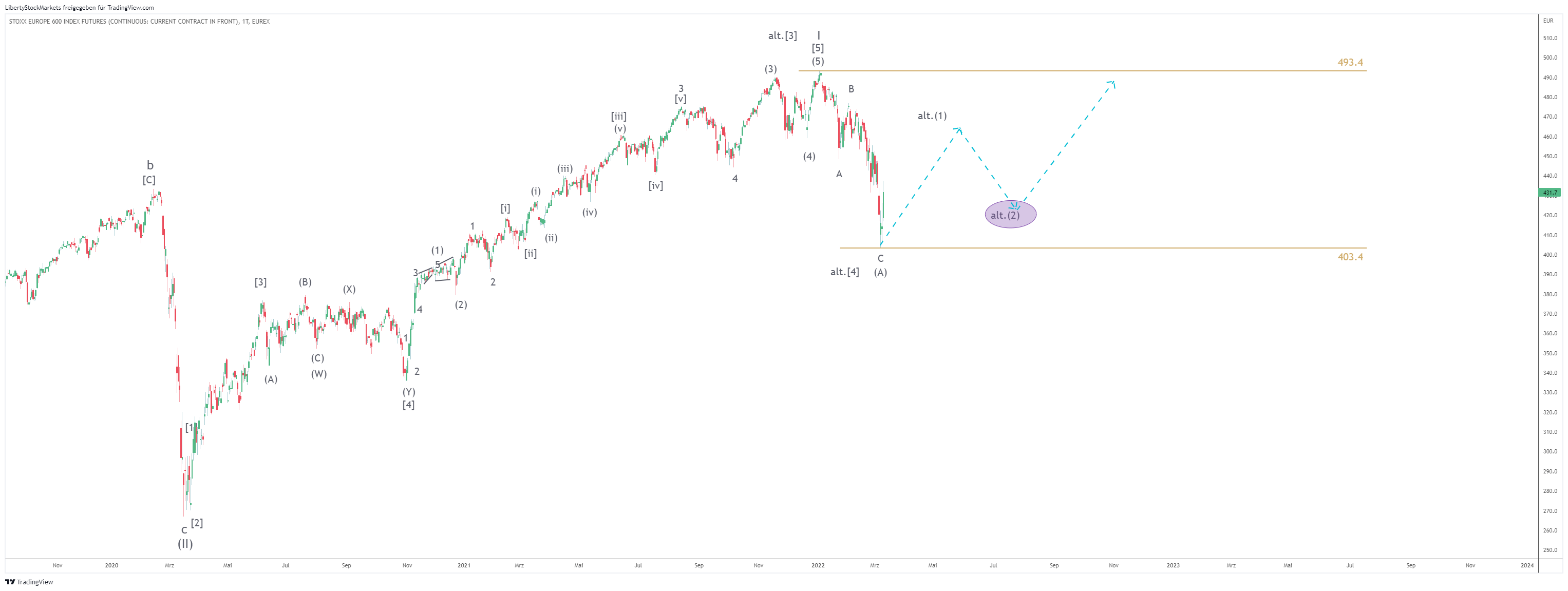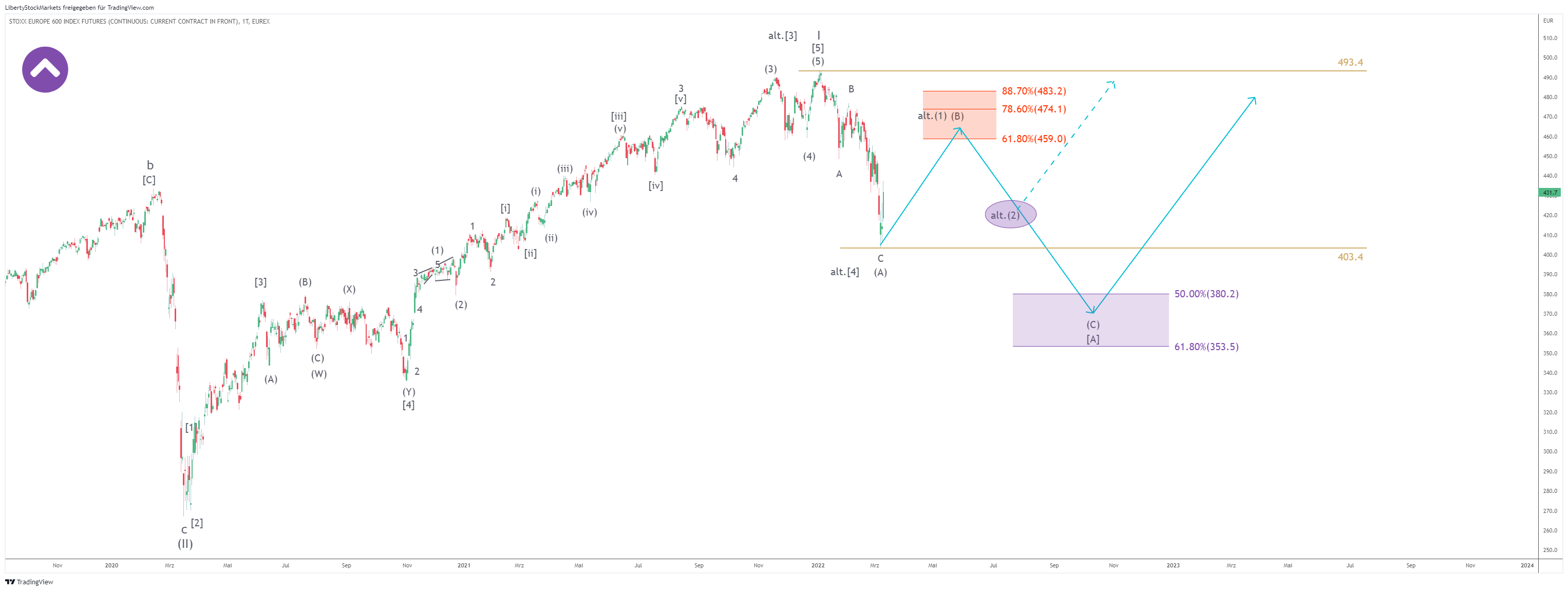the EuroStoxx 600 Index shown here looks like this.
Simply a price trend.
YEAR-END OFFER: First payment in 30 days. Activate now: BASIC2026 · STANDARD2026 · PROFESSIONAL2026
How our analysis works
Explained in 6 steps:
- 1 1
- 2 2
- 3 3
- 4 4
- 5 5
- 6 6
What are candle displays?
The price performance of securities tradable on the stock exchange (e.g. ETFs and shares) is shown in so-called candlestick charts.
Each candle represents a unit of time. For example, a day. The candles are lined up in the chart according to their price position and thus produce the price trend.

If the candle is green, the closing price (in our example after one hour of trading) is higher than its start. A higher price level than at the beginning of the measured hour.
If it is red, the closing price is lower than the starting price.
The basic idea
Our method is based on the further development of the so-called Elliott Wave Theory, which was created by Ralf Nelson Elliott in the 1930s.
– The reasons for trading lie in the psychology of investors and not in events or (stock market) news.
– Investors’ actions leave patterns in the price charts.
– These patterns are based on mathematical relationships.
– Like all other natural events, they can be explained using mathematics.
– Our calculation of price movements and our forecasts are based on this.
The colored boxes
The red boxes
indicate an expected turning point in the price on the upside. For us, this area describes an opportunity to sell or partially sell in order to realize profits. Depending on the individual case, however, it may also make sense to hold the position.
The purple boxes
indicate an expected turning point for the price on the downside. For us, this area describes an opportunity to buy.
This is a so-called bottom, as the price is likely to rise from there over a long period of time.
For us, these are the perfect buying regions for long-term investments.
Arrows and lines
The dotted arrows
show the alternative route (alt.) that the course will take if our first forecast no longer applies.
The purple circles indicate significant turning points on the alternative route. They are analogous to the red or purple boxes (see above).
The horizontal lines
indicate important price levels in the chart. For example, resistances above which the price must rise or supports below which it should no longer fall.
Wedges
The wedge upwards in the purple circle
symbolizes a rising main trend
This symbol can be found at the top left of the chart
The downward wedge in the red circle
symbolizes a falling main trend
This symbol can be found at the top left of the chart
